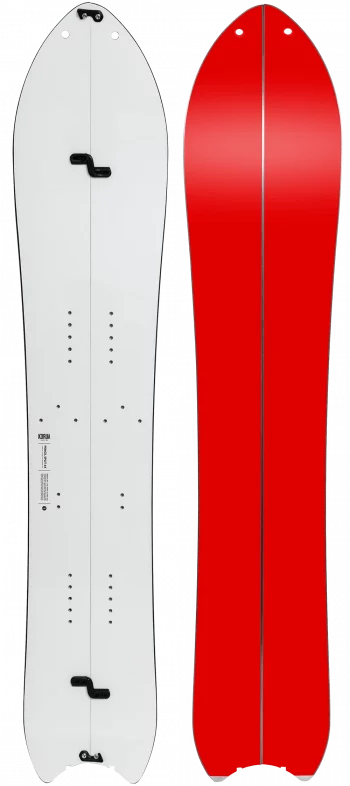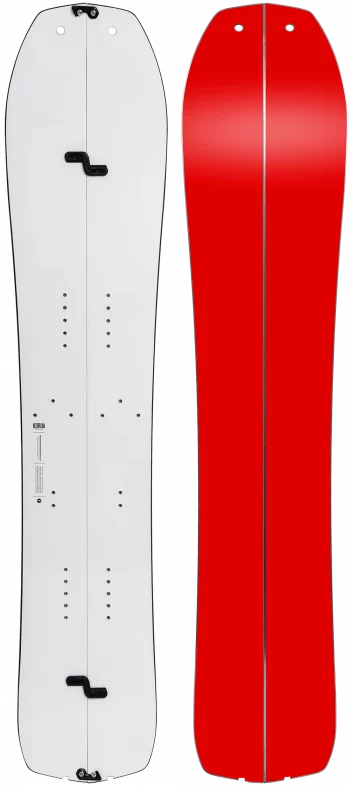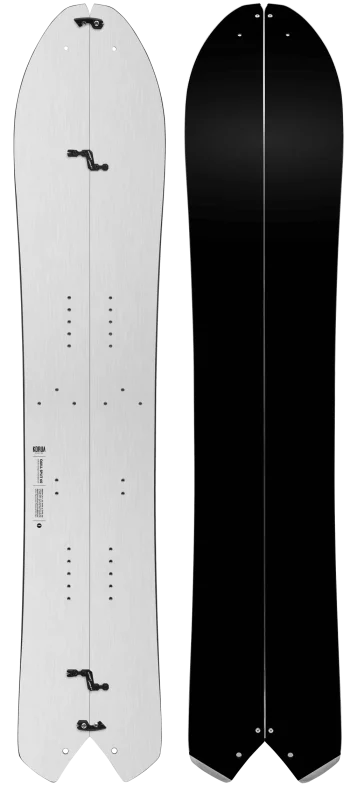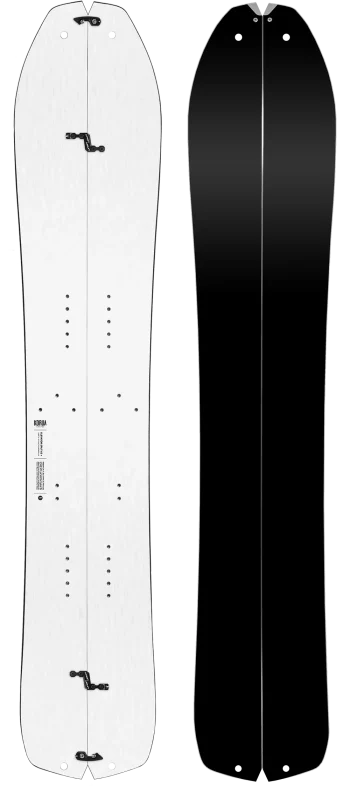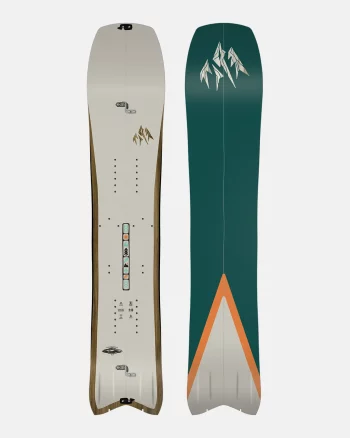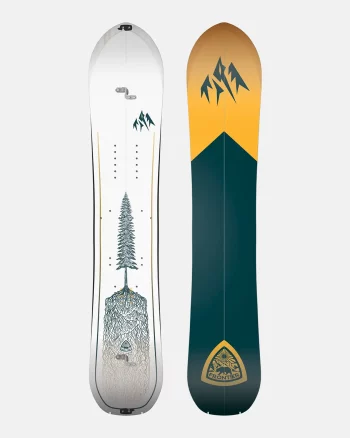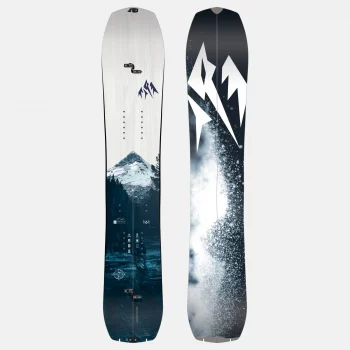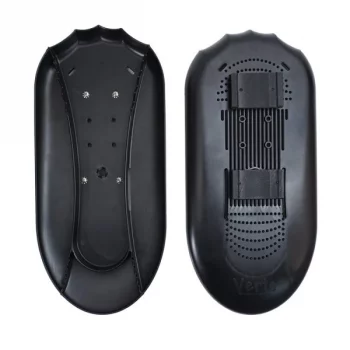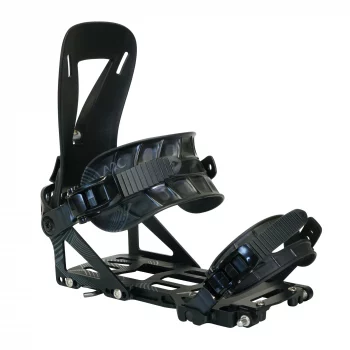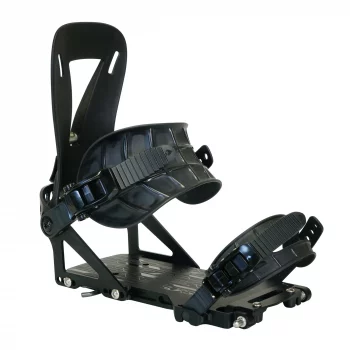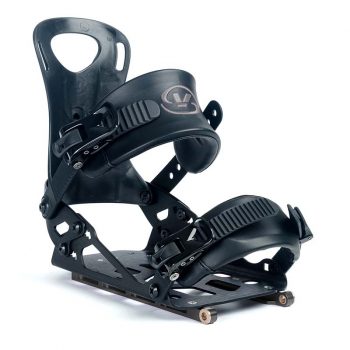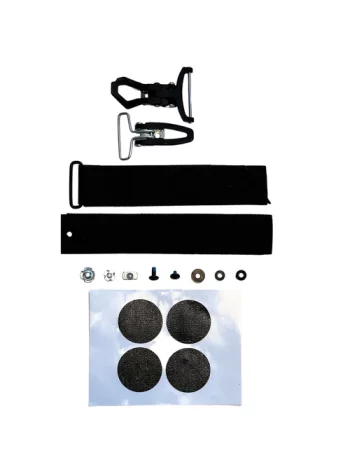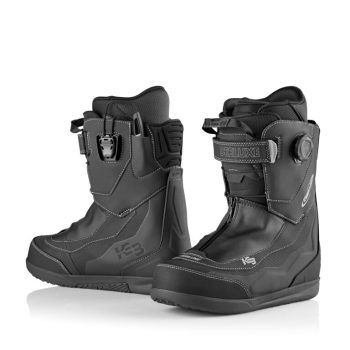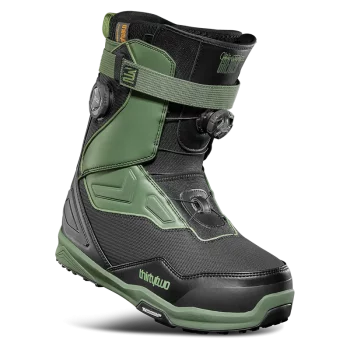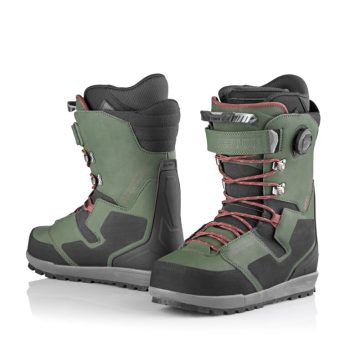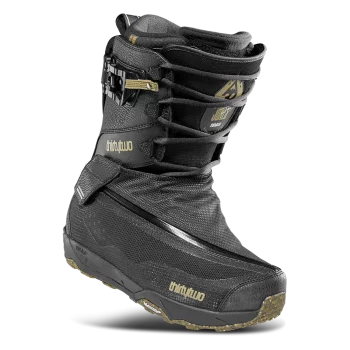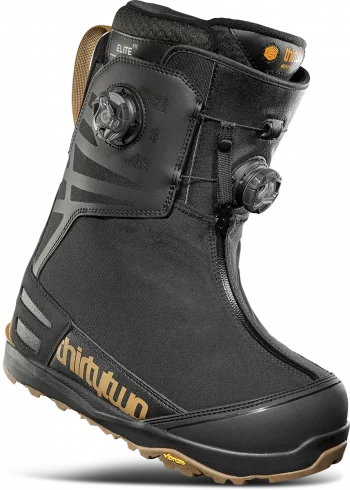Due to its lightness and width, the snowboard has always been an excellent and fun tool for skiing in the backcountry, but it has not excelled in the highlands. Going further than the lift offers, the boarder had to either carry snowshoes with him or be ready to sink into the project with his shoes up to his waist.
It should be clear that moving around with snowshoes, or especially with shoes, is never as easy as skiing with that grinning fellow on skis.
Vuosituhannen alkupuolella vauhdilla yleistyneet ja keventyneet splitboardit, tai ihan yksinkertaisesti splitit, toivat tähän muutoksen. Keskeltä pituussuunnassa halkaistava lauta toimikin yhtäkkiä ylämäissä suksina, ja alamäkeä varten palaset sai yhdistettyä taas laudaksi. Monille splitti avaa ihan uuden maailman lähimäen ympärille loppuun koluttujen hissilinjojen sijaan.
But is the split just a poor compromise? Does the rider on splits have to give up good descent characteristics just so they don't have to carry snowshoes with them? And is it even good to ski with pieces of a board?
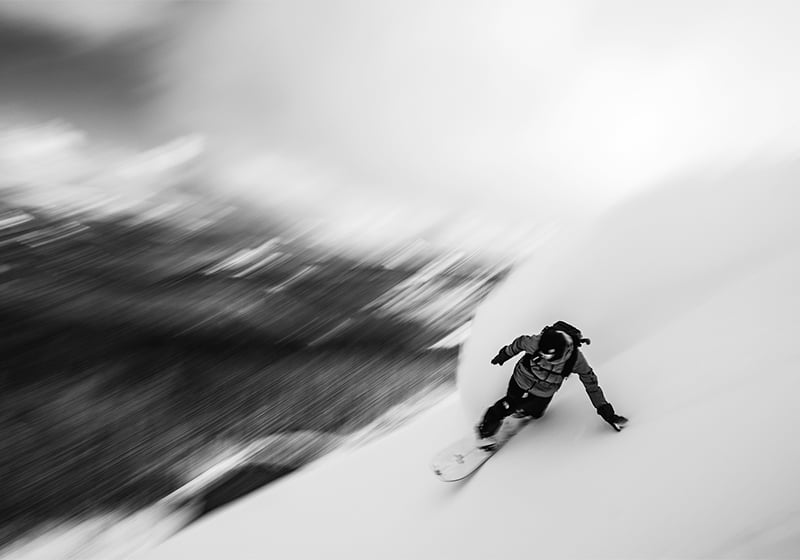

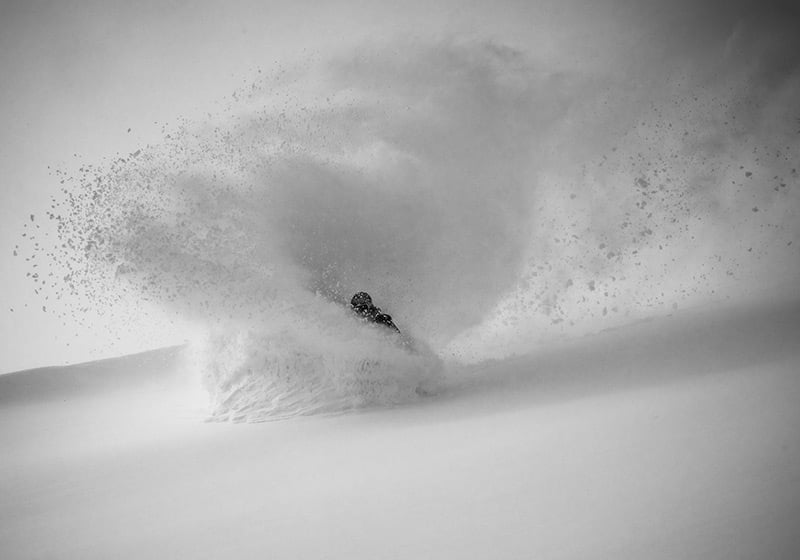
The benefits of Split can be seen above
The purpose of split boards is to make it possible to climb mountains by skiing, and that's where they work well. If the starting point is sweating with snowshoes, the change is really big.
In practice, the board is split for climbing by opening the buckles and removing the bindings (which also hold the board together and stiffen it laterally). After that, the ties are reattached lengthwise to the counter pieces, where the heel part can rise freely.
The halves of the splits have steel edges on both sides of both "skis", and when skiing, the halves of the board are placed opposite each other so that the longer edges remain on the outer edges. Then there are skins, i.e. hairs on the bottom and uphill. Not many minutes are wasted in the whole thing.
Okay, so it turns out there's a reason many cultures abandoned snowshoes after skis were invented. Skiing is lighter than putting on your shoes, because instead of treading on your thighs, you slide your skis - or half of the board - in the wind.
Sama pätee siis splitteihin. Tavallisiin lumilautoihin verrattuna splitit ovat hieman painavampia, mutta painossa ne ovat samaa luokkaa kevyiden touring-suksipakettien kanssa, eli ainakaan painon takia suksilla hiihtelijöistä ei pitäisi ylämäessä jäädä jälkeen.
Compared to snowshoes, the set is lighter because there is no board to carry on the back and no snowshoes on the downhill.
However, snowboarding differs from skiing in a few ways. First, the width of the board halves presents its own challenges and strengths. Wide planks carry narrower skis better in soft wind, and the wider skin surface gives better grip when climbing. On the other hand, the split makes a wider track when skiing, which means that the halves of the Split do not necessarily fit into the groove opened by the skis.
For splits, icy places and moving sideways in steep places is a bit more challenging than for skis. Board shoes and bindings do not offer the same lateral support as skis, so it is more difficult to hold the edge firmly on the ice. Also, especially the inner edges of the splits are quite short and have an aggressive sidecut, so getting a grip in tight spots can cause a little heart palpitations.
But does split work on invoices?
Surely the biggest question when buying or even considering a split is whether it is good to calculate. After all, that's why we climb mountains, so that we can descend from there.
First of all, it is good to remember that, like other boards, there are splits for many tastes. However, many of the split boards are a bit stiffer than regular boards, because when skiing the board needs support and on big mountains a stiff board brings stability.
Suurin osa valmistajista seuraa hyväksi havaittua reittiä splittilautojen kanssa. Valitaan suosittu ja hyväksi havaittu vapaalaskulauta josta splitti tehdään. Esimerkkeinä tästä ovat muun muassa Jones Solution, Jones Frontier 2.0, Jones Hovercraft 2.0, Korua Pencil, Korua Transition Finder sekä useat muut splitit.
Jo nyt markkinoilla on kuitenkin runsaasti erilaisia lautoja toiveista riippuen. On pitkää ja leveää fishtailia puuteriin, löysempää lautaa surffaavampaan menoon ja jäykempää lautaa jyrkempään vapaalaskuun. Tässä kohtaa ostajan siis kannattaa miettiä, mihin maastoon sekä millaiseen laskemiseen splitti pääasiassa tulee.
But to those calculation features. Splits are designed especially for backcountry, and in soft snow it's hard to notice the difference from a regular snowboard. There is of course a difference on a harder surface, but the boards are developing quickly and approach slopeboards in terms of landing characteristics. The answer to the question, is it good to calculate with split, is therefore yes.
Hissihiihdossa varmasti isoin ero johtuu painosta. Klipit, sisäkantit ja monimutkaisemmat siteet tuovat pakettiin painoa, mikä vaikuttaa myös laskuun. Painavampi lauta ei ehkä ole yhtä leikkisä ja näppärä, mutta mikään ei estä kruisailemasta splitillä myös rinteessä tai koluamasta metsäpätkiä.
What does Camu's board expert Joonas Reijonen say about calculating with a split? Where does it bend?
"Moving on Split is easy and comfortable after the initial surprise. You get used to riding with the board, bindings and skins quickly, and you gain confidence in moving with each use."
Ensimmäiset kerrat settiä testatessa laskut kannattaa hoitaa tutuilla reiteillä, tai esimerkiksi laskettelukeskuksen alueella. Varmista vain keskukselta ensin heidän suhtautuminen splitillä hiihtelemiseen, Reijonen vinkkaa.
”Splitti taipuu laskiessa siihen mihin solidikin lauta. Laudan profiili, sheippi, koko sekä ominaisuudet määräävät missä lauta on parhaimmillaan ja missä laudan asettamat rajoitukset kannattaa pitää mielessä. Lyhyt ja leveä lauta on näppärä esimerkiksi metsäpyydassa, mutta jos lasket isoa ja aavaa linjaa se ei välttämättä ole paras valinta.” Splitin valinta on samanlainen prosessi kuin normaalin lumilaudan. Mihin maastoon lauta pääasiassa tulee? Millainen olet laskijana? Minkä kokoinen olet? Minkä kokoinen lumilautakenkä sinulla on? Kun näihin kysymyksiin on olemassa vastaus ei laudan valinta ole hankalaa.
Camun splittivalikoimaa
-
Pencil Split – Splitboard
749,00€ -
Transition Split – Splitboard
749,00€ -
Quill Split – Splitboard
999,00€ -
Elevator Split – Splitboard
1199,00€ -
Dream Weaver 2.0 Splitboard – splitboard
799,00€ -
Hovercraft 2.0 Splitboard – splitboard
949,00€ -
Frontier 2.0 Splitboard Wide – splitboard
799,00€ -
Frontier 2.0 Splitboard – splitboard
799,00€ -
Antti Autti Limited Solution – Splitboard
999,00€
What equipment is required besides a split board?
Bandages
Splittilaudoissa voi periaatteessa käyttää normaaleja lumilautasiteitä, jos lautaan on asennettu niille sopiva sovitinkisko (Voile Set for Standard Bindings). Kisko kuitenkin kohottaa siteitä irti laudasta tavallista enemmän, joten suositeltavampaa on käyttää splitteihin erikseen suunniteltuja vapaalaskusiteitä, jotka kiinnitetään puckkeihin. Kiinnitys vaihtelee hieman valmistajasta riippuen: Yleisin tapa on on niin sanottu Voilén puck setti johon side kiinnittyy yleensä pohjalevystä löytyvällä vivulla lukitsemalla. Tätä systeemiä käyttävät sekä Spark Rnd että Voile.
Splittisiteet ovat usein kevyempiä ja kestävämpiä kovaa rasitusta varten. Tyypillisesti side on myös hieman rinnesidettä jäykempi ja pehmustusta on vähemmän. Lisäksi siteissä on paljon ominaisuuksia jotka helpottavat hiihtoa, esimerkiksi highbackin säätö nolla asteiseen kulmaan tai jopa vähän negatiiviseen kulmaan. Kaikki splittisiteet täältä.
Splitboard Bindings
-
Surge ST Bindings – Splittisiteet
579,00€ -
Arc ST Bindings – Splittisiteet
549,00€ -
Verts w. Adapter – lumikengät
135,00€ -
Arc ST Bindings – Splittisiteet
549,00€ -
Surge ST Bindings – Splittisiteet
579,00€ -
Surge ST Bindings – Splittisiteet
569,00€ -
Light Rail Binding – splittisiteet
299,00€399,00€ -
Hardboot Dual Height Wires – kovan siteen kantakorotus
79,00€ -
Dyno DH Bindings – kovasplittiside
419,00€
Boots
Splittisiteisiin sopii tavalliset pehmeät lumilautakengät. Kenkiä valitessa onkin ehkä tärkeämpää ostaa omaan laskuun sopivat bootsit. Takamaastossa on kuitenkin muutamia ominaisuuksia, joista on hyötyä: Ensinnäkin hyvät pohjat auttavat paljon, kun lauta pitää esimerkiksi kivikoissa ottaa jalasta pois. Monissa kengissä on nykyään vaelluskenkämäiset pohjat, jotka toimivat hyvin kovassa käytössä. Hiihtäessä on myös hyötyä, jos kengästä löytyy tarpeeksi negatiivista joustavuutta, eli että kenkä taipuu myös taaksepäin. Boa tai pikanauhoitus on suosittu valinta splittikengissä, sillä se mahdollistaa nopean kengän löystyttämisen ylöspäin kiivetessä ja taas nopean kiristämisen alaspäin laskiessa. Kaikki Camun lumilautakengät.
Snowboard shoes
-
Stiff Tongue – jäykistekieli
29,00€ -
The Disruptive – kovat splittikengät
649,00€ -
Backcountry Repair Kit – korjaussetti
29,00€ -
Aeris – lumilautakengät
429,00€ -
TM-2 XLT Double Boa Grenier – lumilautakengät
489,00€ -
X-plorer – lumilautakengät
459,00€ -
Jones MTB Lite – lumilautakengät
699,00€ -
Jones MTB BOA 24 – Lumilautakengät
549,00€689,00€ -
AREth RIN – Lumilautakengät
255,00€369,00€
Villi vaihtoehto – Kovat kengät ja siteet
Laskettelumonoon pohjautuva kova splittikenkä on kasvattanut suosiotaan. ”Kovan” splittikengän edut pehmeään verrattuna ovat pääasiassa ylämäkipainoitteisia. Kova lumilautakenkä liikkuu varreltaan huomattavasti paremmin kuin pehmeä. Kengällä on myös huomattavasti suurempi negatiivinen kulma kuin pehmeällä kengällä hiihtäessä. Kovalla kengällä on myös parempi potkia lumiaskelmia ja jäärautoja on helpompi käyttää. Lisäksi kovaside + kovakenkä yhdistelmä on paljon kevyempi.
Skins
Skinit eli nousukarvat ovat nousuissa ehdottomat: ne luistavat eteenpäin mutta antavat pitoa taaksepäin. Skinit pysyvät pohjissa liimapinnan ja nose- ja teililenkkien avulla. Skinien “karvapuoli” on joko nylonia, mohairia tai niiden sekoitetta. Yleensä sekoite tarjoaa parhaan yhdistelmän luistoa, pitoa ja keveyttä. Skinit on hyvä olla splittilaudalle tarkoitetut, tällöin kärkikappale on oikeassa kulmassa. Camun splittikarvat ja -sauvat.
Other supplies
For skiing, the split package also requires poles. The most functional option is telescopic poles, which can be adjusted to the right length for ascents and packed short for descents. In the rods, you can choose between aluminum and carbon fiber, depending on how much you are willing to pay for lightness. It is also an advantage that the poles can fit inside the backpack if needed, like Black Diamond's Compactor poles, for example.
Crampons can also be attached to the split bindings, when the grip on the skins is no longer sufficient.
Last but certainly not least: When moving in the backcountry, you must always remember safety. The equipment of a person moving in Split should therefore always include at least an avalanche transmitter, a probe and a shovel.
You can also contact us To Camu, we are happy to help with related questions, choosing the right Split, and purchasing equipment.

